
Matrix is an open network standard tailored for secure decentralized real-time communication.
It is published and maintained by a non-profit, Matrix.org Foundation. They aim to create an open, independent, and evolving communication platform.
If an application supports the Matrix protocol, you can consider it a Matrix client.
Why Should You Choose a Matrix Client?
Matrix clients focus on security and privacy and offer a decentralized network that provides opportunities for numerous things.
Since 2019 (when it got out of beta), several organizations and government authorities have gradually adopted the Matrix protocol to empower their communication platforms for security, privacy, and reliability.
For instance, a decentralized protocol makes way for cross-communication between organizations and gives you a communication protocol that is resistant to censorship.
Matrix protocol is the right choice if you want something that gets you away from the big tech.
Not just limited to that, you also get the ability to run your server to join the Matrix network. In other words, you get a decentralized infrastructure for communication while still having some control over it to set it up and configure it as per your requirements.
In case you are curious, Matrix protocol has all the essential features one would need, including:
- Decentralized conversations
- End-to-End encryption
- WebRTC VoIP/Video calling
- Real-time sync
- Read receipts
- Typing Notifications
- Group conversations
And I should highlight this again: It is an open-source project!
So, it is a no-brainer to opt for Matrix clients, especially now that more users care about their privacy and security.
Here, I shall highlight some of the most helpful open-source Matrix clients, primarily for desktop (Linux, Windows, macOS), while mentioning mobile and terminal clients.
1. Element
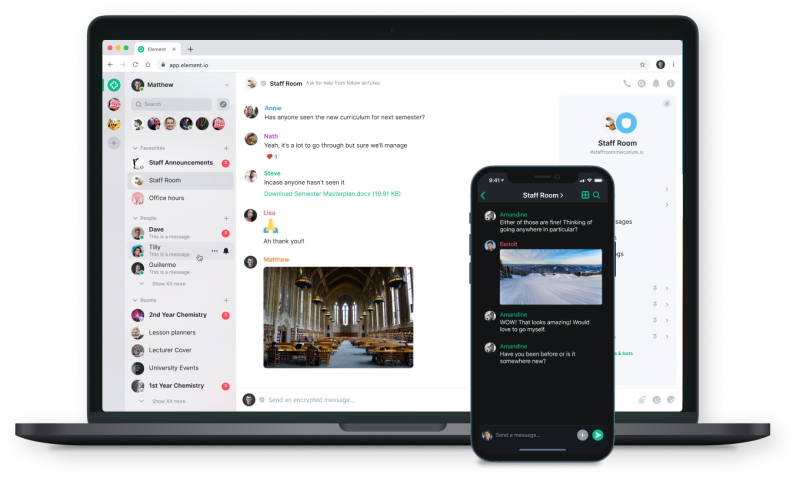
Element is one of the best open-source Slack alternatives. You can use it for personal communication and team chat as well.
It is free to get started, but you can self-host your server or pay a premium for a managed home server. You get various useful features to collaborate effectively and securely communicate with your team/friends.
If you opt to pay for a subscription, you can even bring your Signal, WhatsApp, and Telegram chats into one place.
It supports Linux, Windows, and macOS while offering a proper mobile client for Android and iOS. Additionally, you can use it through the web browser. So, it should be a convenient option.
2. Rocket.Chat
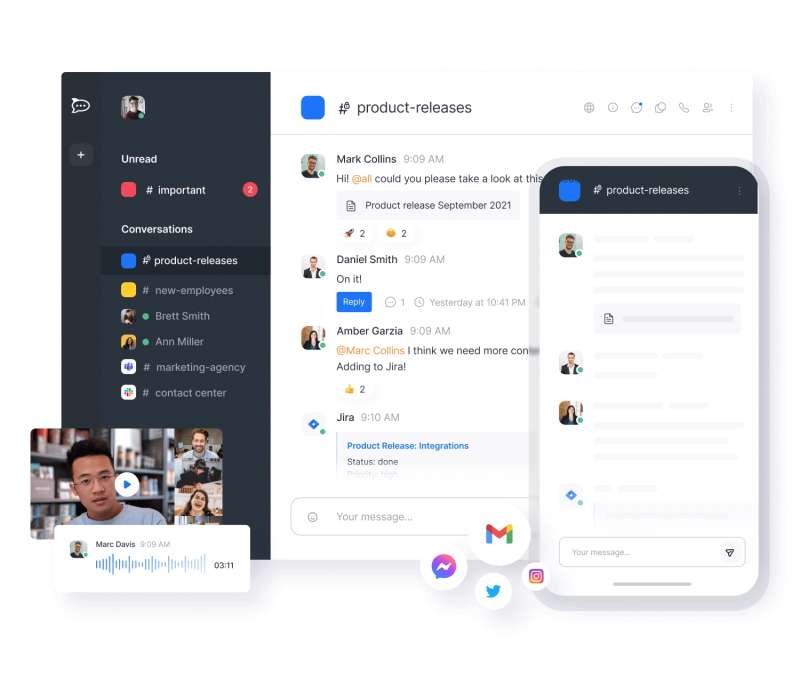
Rocket.Chat is yet another Slack alternative that we used for our internal team communication and liked it for the time we interacted with it.
It is available for Linux, Windows, and macOS. You also get mobile applications for Android and iOS.
While it allows you to self-host or opt for a premium subscription, it also announced adding support for Matrix protocol integration in 2022.
So, Rocket.Chat can be a flexible option for your use-case, with or without Matrix protocol integration.
3. NeoChat
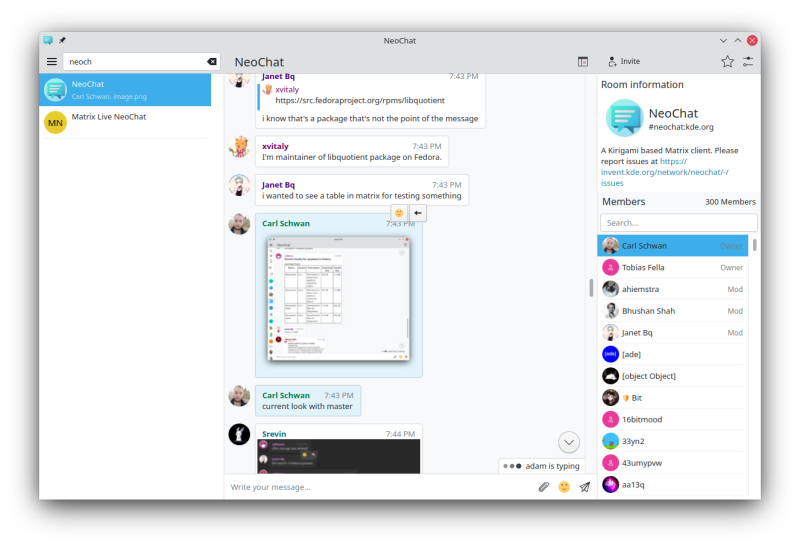
NeoChat is a simple Matrix client actively developed under KDE’s umbrella.
Unlike Element, it is only available for Linux and Windows, and particularly tailored for KDE Plasma. You can use it on other desktop environments as well.
You can install it through KDE’s Discover software center, Flathub, and Snap Store. It is not available for mobile platforms. So, it can be a good candidate for desktop users who prefer a straightforward Matrix client.
Check out its source code to explore more about it.
4. FluffyChat
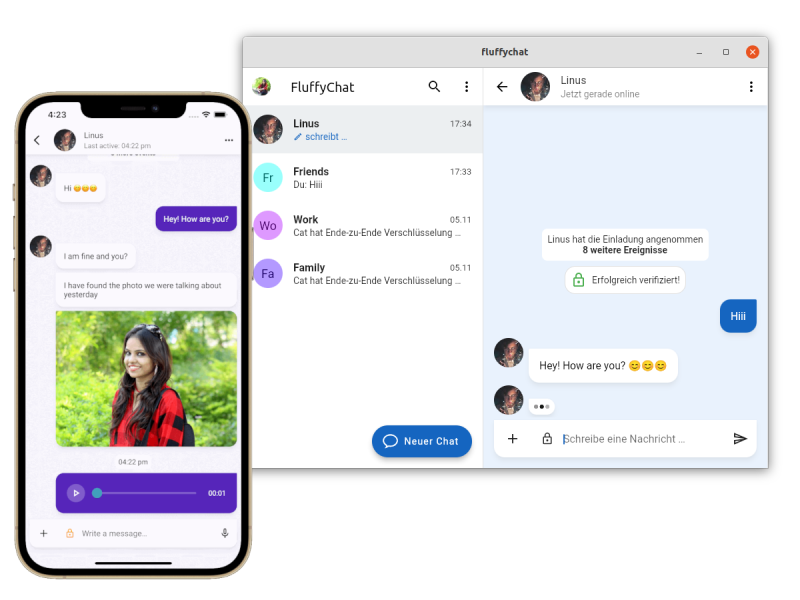
FluffyChat makes up for a good-looking (cute) Matrix client in terms of user experience.
If you want a simple and intuitive Matrix client on your desktop with mobile apps (Android and iOS) available, FluffyChat is an impressive option.
For Linux, you can install it from the Snap Store or Flathub. It does not offer native apps for Windows and macOS, but you can use it through the web browser.
If you are curious, you can check out its GitHub page.
5. Fractal
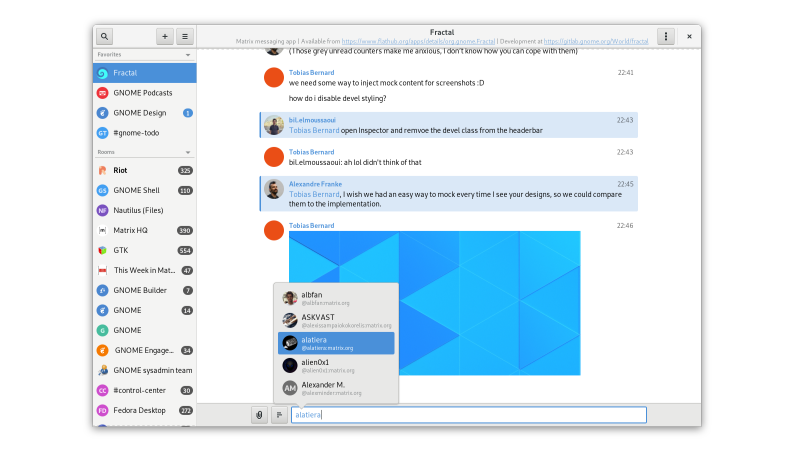
Fractal is a Matrix messaging client for GNOME desktop, written in Rust. As described, it provides an optimized interface fit for collaboration in large groups.
Considering it is available as a Flatpak, you can install it on any Linux distribution, irrespective of the desktop environment.
Fractal seems an excellent option for users focusing on applications that perform the fastest on their system. You can head to its GitLab page to research more about it.
6. Hydrogen Web (Experimental)
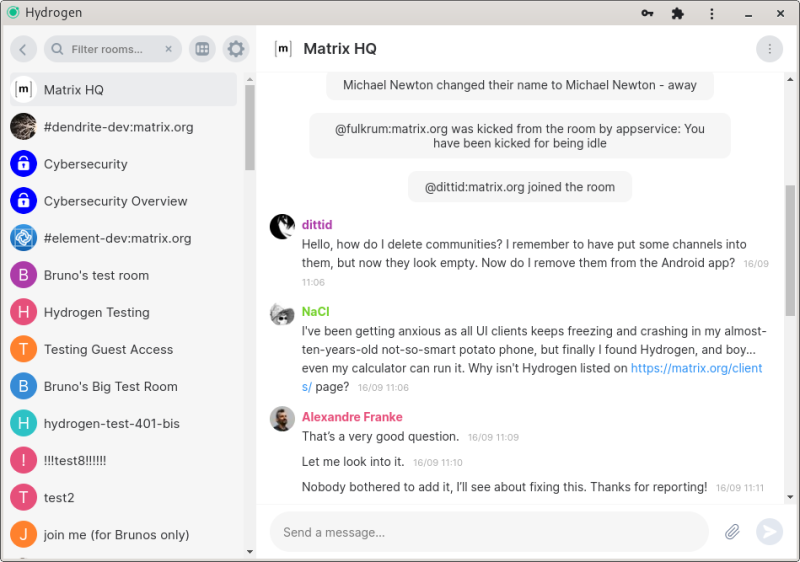
Looking for another minimal (performance-focused) Matrix client?
Hydrogen is a chat client that aims to provide a lightweight experience, offline functionality, and wide browser support.
While it is still a work in progress, it is being developed by the same team behind the Element messenger. So, if you longingly expect a lightweight Matrix client as an alternative to others, you might want to follow the project on its GitHub page.
7. Matrix Commander (CLI-based)
This command-line tool can be the perfect fit if you want to use the terminal to send/receive text messages via the Matrix network.
Of course, you cannot do everything from the terminal. So, it is best suited for creating cron jobs for message reminders, or bots, and similar use-cases.
You can find it on PyPi and Docker Hub as well.
8. Gomuks (CLI-based)
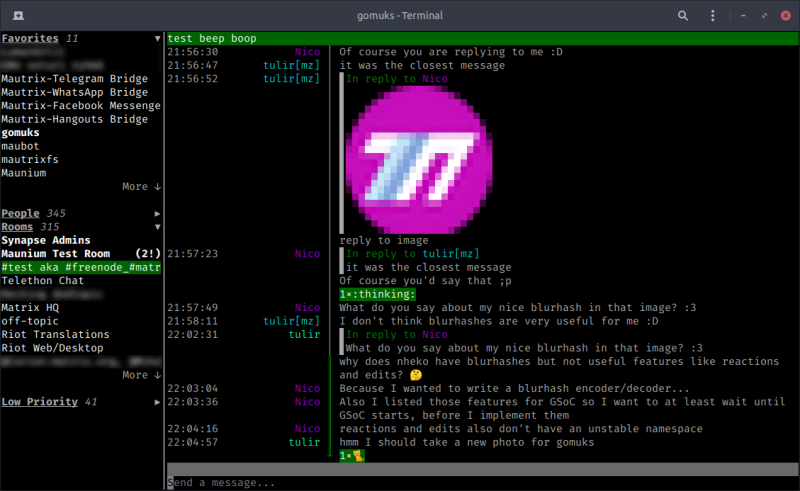
Need a terminal-based Matrix client written in Go?
Not for everyone to try. But, if you are someone who likes to use command-line tools written in Go, Gomuks can be a straightforward Matrix client for basic messaging.
You can find the binaries for Linux, Windows, and macOS on its GitHub releases section.
9. Syphon (Alpha)
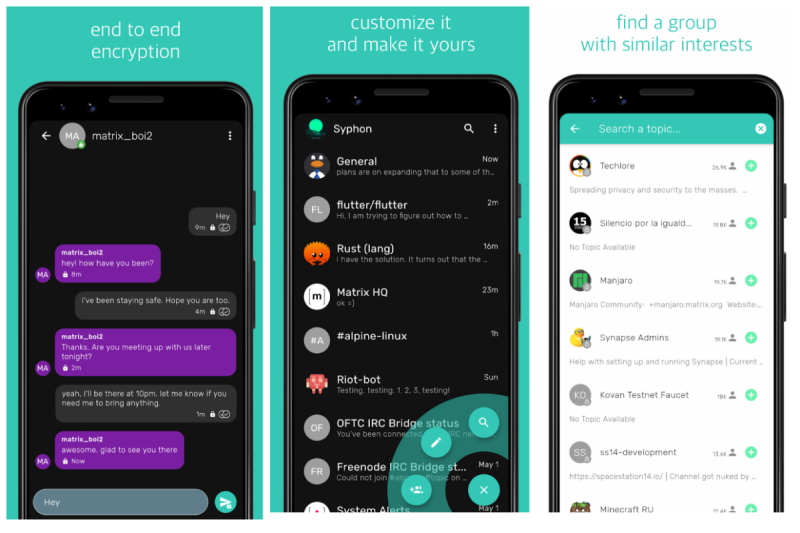
We usually avoid listing programs in their early stages of development. However, Syphon is an interesting option as a mobile-exclusive Matrix client.
If you want a Signal-like open-source Matrix client for your Android/iOS device, Syphon can be an exciting choice. The user interface looks familiar (but not an exact copy of it). You can try it out if you are looking to experiment.
Wrapping Up
Matrix protocol may not be entirely popular across every organization and demographic. However, it is proving to be one of the most robust decentralized networks for privacy and reliability as an open-source project.
The best thing is that you get to choose the client you want, without being forced to use a particular app for communication across multiple devices.
So, what would you pick as your favorite Matrix client?

